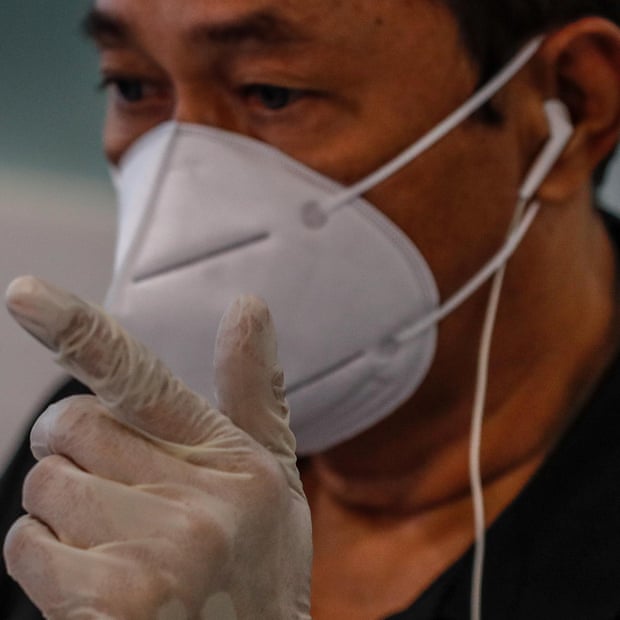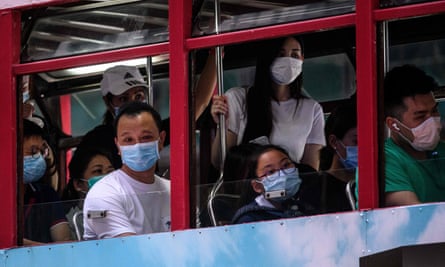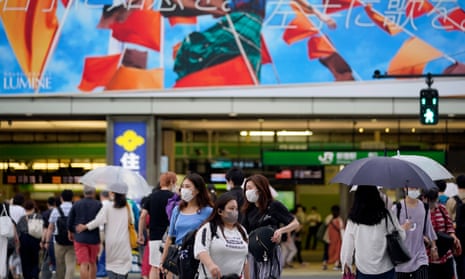Tokyo hit another record daily high number of new cases, Australia is to halve the number of citizens it allows to return each week and Hong Kong’s schools have closed early for the summer as countries around the world struggled to contain fresh coronavirus outbreaks.
Amid growing signs of a resurgence of the virus in Japan, the capital reported 243 new infections on Friday, more than the previous day’s 224 and the first time that more than 200 cases have been confirmed for two consecutive days.
The metropolitan and central governments have said they would not yet be declaring another state of emergency, after lifting the previous one in mid-May, or putting in place other strict measures, saying the country’s healthcare system is well prepared.
In Australia, the prime minister, Scott Morrison, said on Friday the country would from Monday restrict the number of citizens and permanent residents admitted each week to 4,000, roughly half the current average.
Australia has so far allowed any citizen who wants to go home to enter the country providing they complete a 14-day quarantine in hotels paid for by state governments, but from next week arrivals will have to pay for their quarantine stays themselves.
Q&ACoronavirus pandemic: 10 countries of concern
Show

Brazil 2,859,073 cases, 97,256 deaths
President Jair Bolsonaro dismissed the disease as a “little flu” as it rampaged through his country and mocked measures such as wearing masks. Two health ministers have quit and Brazil's outbreak is the second-deadliest in the world.
India 1,964,536 cases, 40,699 deaths
India brought in a strict nationwide lockdown in March that slowed the spread of the virus but did not bring it under control. As the country began easing controls, cases surged and it now has the third highest number. Mortality rates are low, but it is unclear if this reflects reporting problems or a relatively resilient population.
Iran 317,000 cases, 17,800 deaths
Iran had one of the first major outbreaks outside China. A lockdown slowed its spread but after that was eased in April, cases rebounded. Several senior officials have tested positive, and the government has strengthened controls, including making masks obligatory in public places.
Israel 78,300 cases, 565 deaths
Israel had an early travel ban and strict lockdowns, and in April the prime minister, Benjamin Netanyahu, declared the country an example to the world in controlling Covid-19. But cases that in May were down to just 20 a day, skyrocketed after the country started opening up. Partial controls have been brought back with warnings more could follow.
Mexico 456,100 cases, 49,698 deaths
President Andrés Manuel López Obrador joined other populists from across the political spectrum in dismissing the threat from coronavirus; when schools closed in March he shared a video of himself hugging fans and kissing a baby. The outbreak is now one of the worst on the continent.
Philippines 115,980 cases, 2,123 deaths
A strict lockdown from March to June kept the disease under control but shrank the economy for the first time in 20 years. Cases have climbed steadily since the country started coming out of lockdown, and President Rodrigo Duterte has said the country cannot afford to fully reopen because it would be overwhelmed by another spike.
Russia 865,000 cases, 14,465 deaths
Coronavirus was slow to arrive in Russia, and travel bans and a lockdown initially slowed its spread, but controls were lifted twice for political reasons – a military parade and a referendum on allowing Putin to stay in power longer. Despite having the fourth biggest outbreak in the world, controls are now being eased nationwide.
Serbia 27,000 cases, 614 deaths
Cases are rising rapidly, hospitals are full and doctors exhausted. But the government has rowed back from plans to bring back lockdown controls, after two days of violent protests. Critics blame the sharp rise in cases on authorities who allowed mass gatherings in May and elections in June. Officials say it is due to a lack of sanitary discipline, especially in nightclubs.
South Africa 529,000 cases, 9,200 deaths
South Africa has by far the largest outbreak on the African continent, despite one of the strictest lockdowns in the world. Sales of alcohol and cigarettes were even banned. But it began reopening in May, apparently fuelling the recent rise in cases.
US 158,000 deaths, 4.8m cases
The US ban on travellers from overseas came late, and though most states had lockdowns of some form in spring, they varied in length and strictness. Some places that were among the earliest to lift them are now battling fast-rising outbreaks, and the country has the highest number of confirmed cases and deaths. Opposition to lockdowns and mask-wearing remains widespread.
Source: Johns Hopkins CSSE, 6 August
A worsening second-wave outbreak has led to the lockdown being reimposed in Melbourne and measures taken to isolate the state of Victoria, which recorded a further 288 coronavirus cases on Friday. Authorities made the wearing of masks mandatory when physical distancing is not possible in places with significant community transmission, such as Melbourne.
Hong Kong’s government on Friday suspended all kindergarten, primary and secondary school classes after officials in the semi-autonomous Chinese territory reported 42 new infections the previous day, 34 of them locally transmitted.
Most of the new cases were related to known clusters, including an elderly home and several restaurants. The rise prompted the government to tighten social-distancing measures, with school holidays beginning on Monday, a week or 10 days early.

The education secretary, Kevin Yeung, said there had been no recorded cases of transmission in schools, but it would be safer if fewer students took public transport. Hong Kong has reported 117 new confirmed cases in the past week, including six taxi drivers, prompting concern from health authorities.
In Latin America, which is home to 8% of the world’s population but has recorded nearly half of recent coronavirus fatalities, two more leading politicians have tested positive in the same week as Brazil’s president, Jair Bolsonaro, said he had contracted the virus.
Diosdado Cabello, Venezuela’s number two official and the leader of the Socialist party, announced his diagnosis on social media on Thursday evening and said he was in self-isolation. Jeanine Áñez, Bolivia’s rightwing interim president, said she had received the same diagnosis.
Israel also recorded its highest number of coronavirus infections over a 24-hour period on Friday, with nearly 1,500 new cases confirmed, the health ministry said. The prime minister, Benjamin Netanyahu, said the decision to allow businesses, including bars and event spaces, to reopen may have been made too soon.
In Europe, Italy’s prime minister said it would probably extend a state of emergency beyond the deadline of 31 July. Giuseppe Conte said prolonging the six-month state of emergency, declared at the end of January, would mean “we are in a position to continue taking the necessary measures” to face the epidemic.
Meanwhile, two World Health Organization experts are to spend the next two days in Beijing, the Chinese capital, to lay the groundwork for a larger mission aimed at investigating the origins of the Covid-19 pandemic, which according to the Johns Hopkins University has infected 12,294,117 worldwide and killed 555,531.
The scientists, an animal health expert and an epidemiologist aim to set the scope and terms of reference for the future mission that will attempt to ascertain how the virus jumped from animals to humans.
Scientists believe the virus may have originated in bats, then was transmitted through another mammal such as a civet cat or a pangolin before being passed on to people at a fresh food market in the central Chinese city of Wuhan late last year.
More than 120 countries called for an investigation into the origins of the virus at the World Health Assembly in May, but China has insisted the inquiry must wait until the pandemic is fully under control: at present, the US, Brazil and India are continuing to see an increasing number of cases.
